BTF 3.0 reveals the future of cable-less PC builds — single 50-pin connector supports up to 2,145 watts to power a CPU and GPU
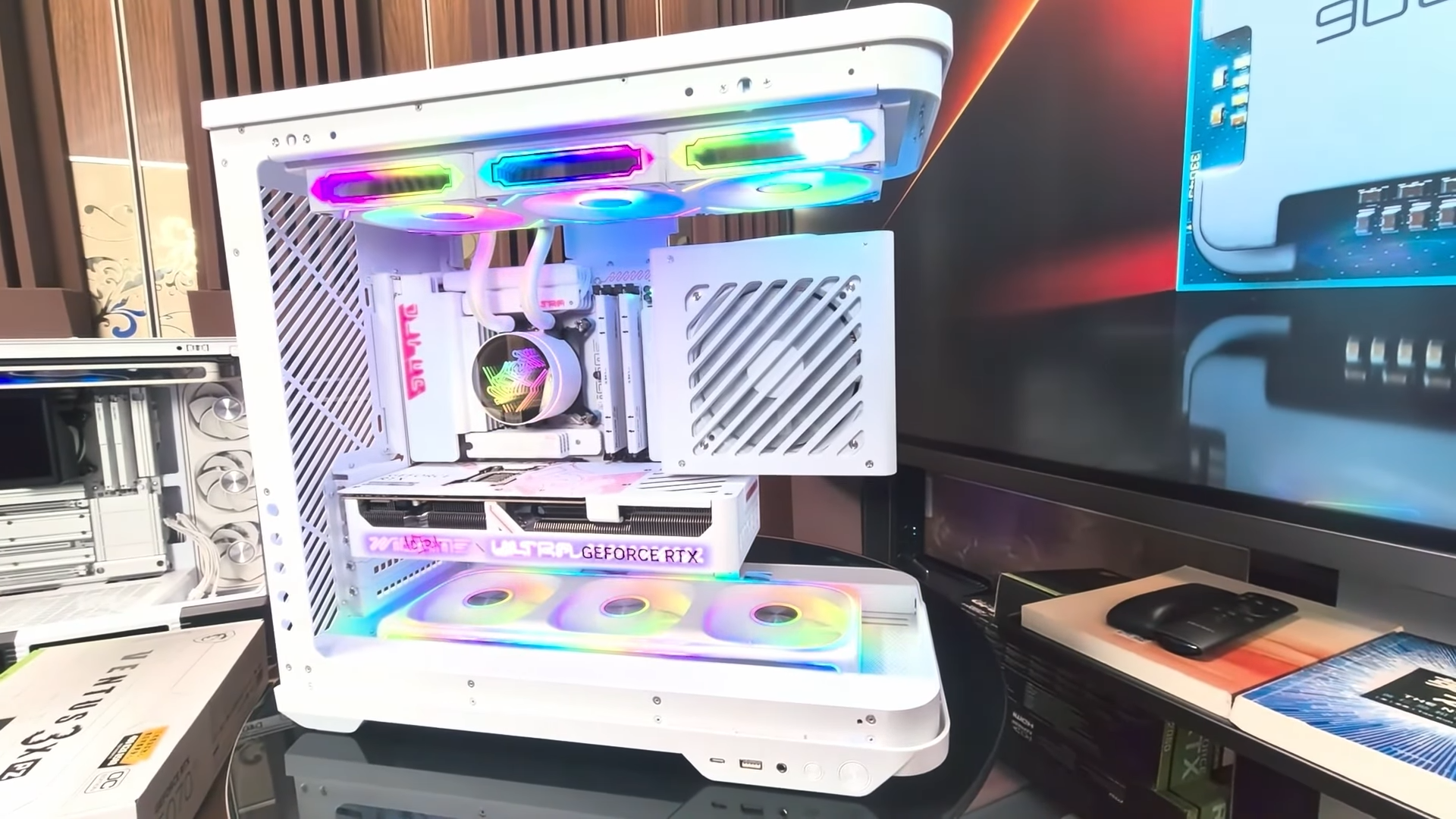
Back-connect motherboards and GPUs have been popping up more than ever lately, thanks to various manufacturers adopting DIY-APE's designs and building upon them. You can find a bunch of options in the cable-less market now, but there are still some caveats, like the individual cables for all the components being separate. That changes today — with BTF 3.0 — the latest "Back to Future" spec from DIY-APE looking to finally eliminate cables altogether.

DIY-APE starts the video by narrating his journey in the PC landscape and how his vision of a seamless Mac Pro-style PC build led to the inception of the BTF standard. Despite the lack of experience, this novel concept has come a long way. Still, BTF 2.0, the latest iteration currently available, just flips the connectors from the front of the motherboard to the rear; you're still required to plug in several cables.
What DIY-APE wanted was a complete reinvention, with cables that are not only hidden from plain sight but also minimized to the point where they're genuinely more accessible. That's where BTF 3.0 comes in. It retains backwards compatibility with prior BTF versions but consolidates the GPU, CPU, EPS, and other connectors (not including front panel I/O) into a single 50-pin connector, using the ATX 3.0/3.1 standard from Intel.
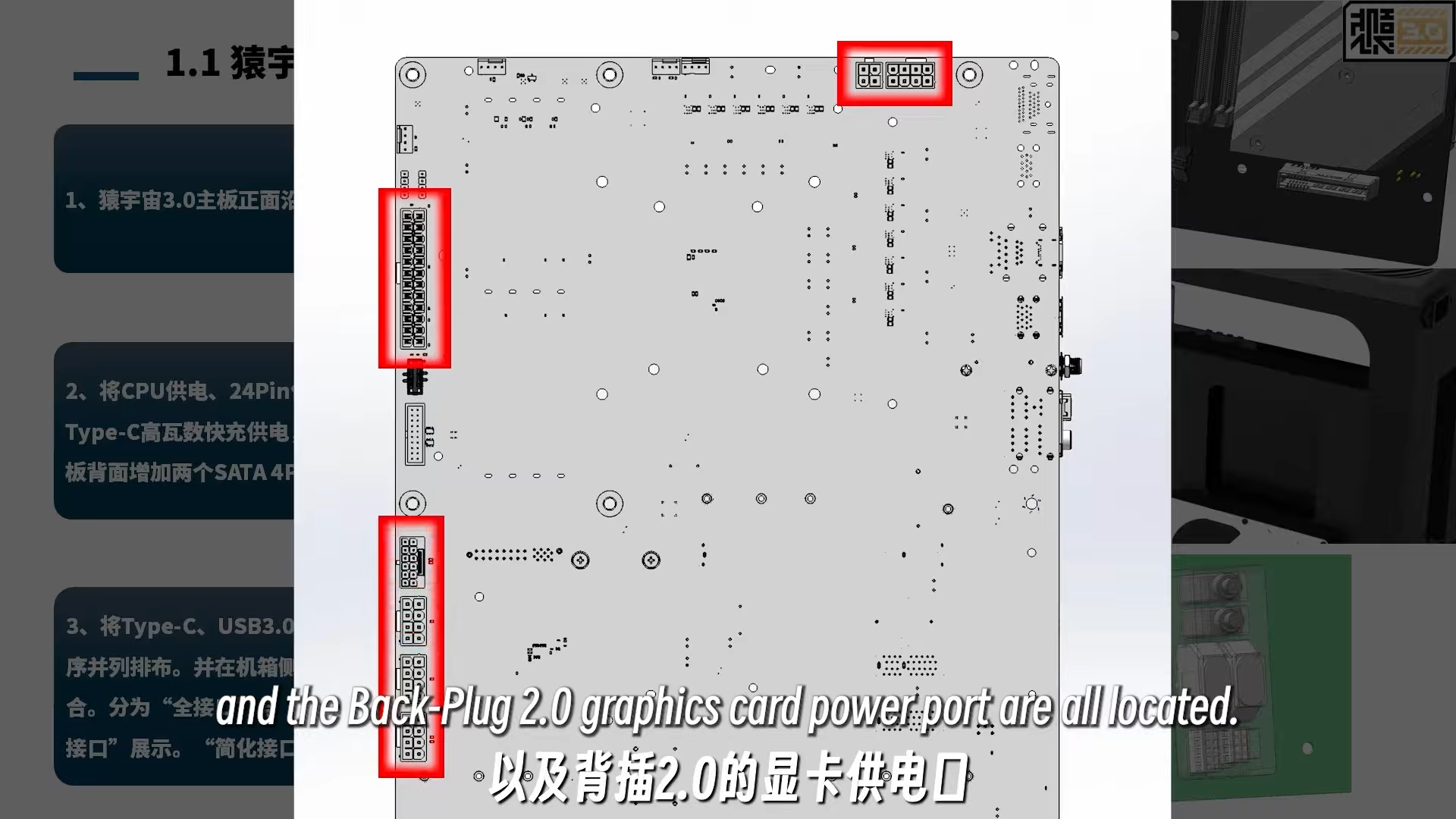
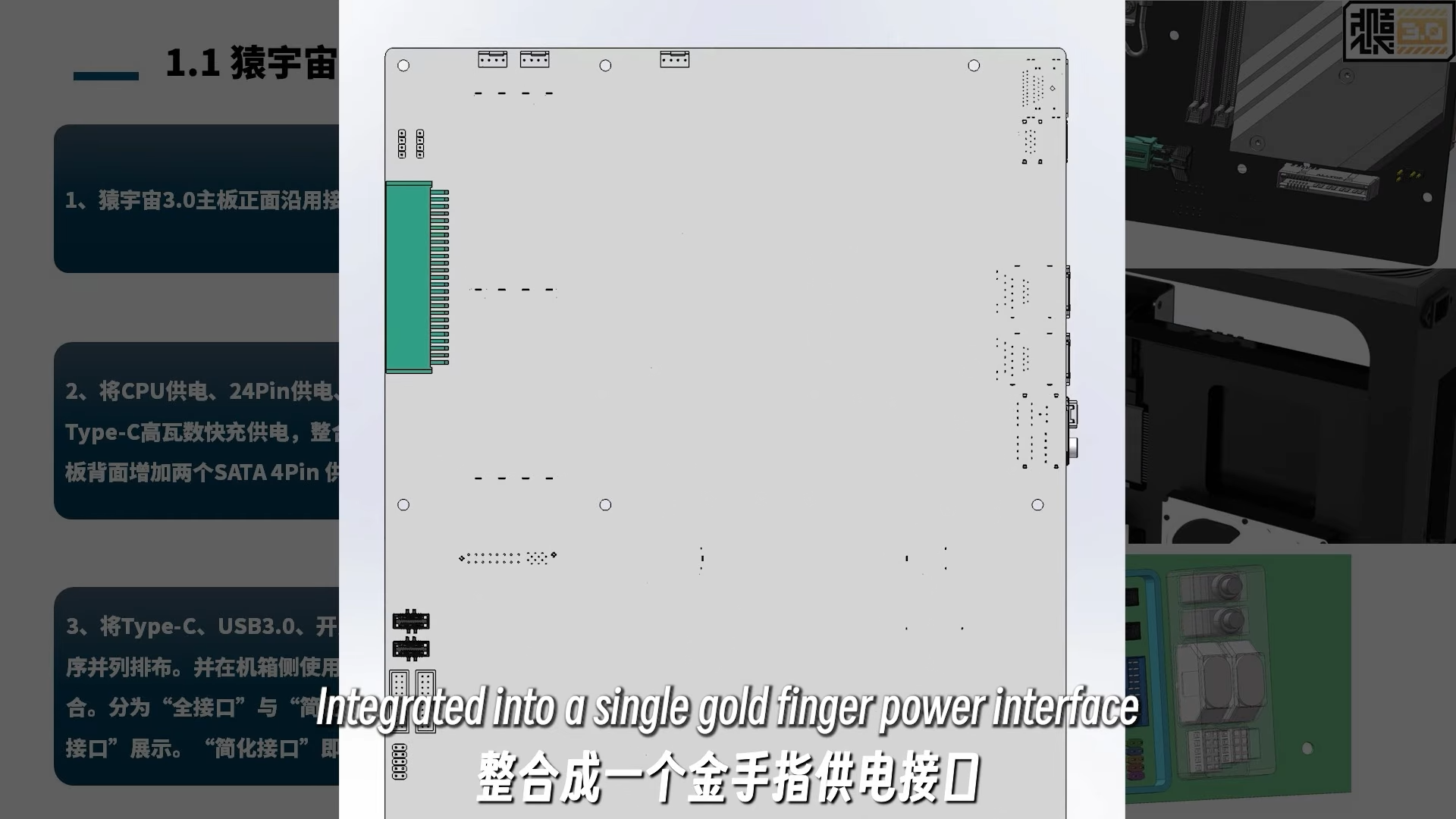
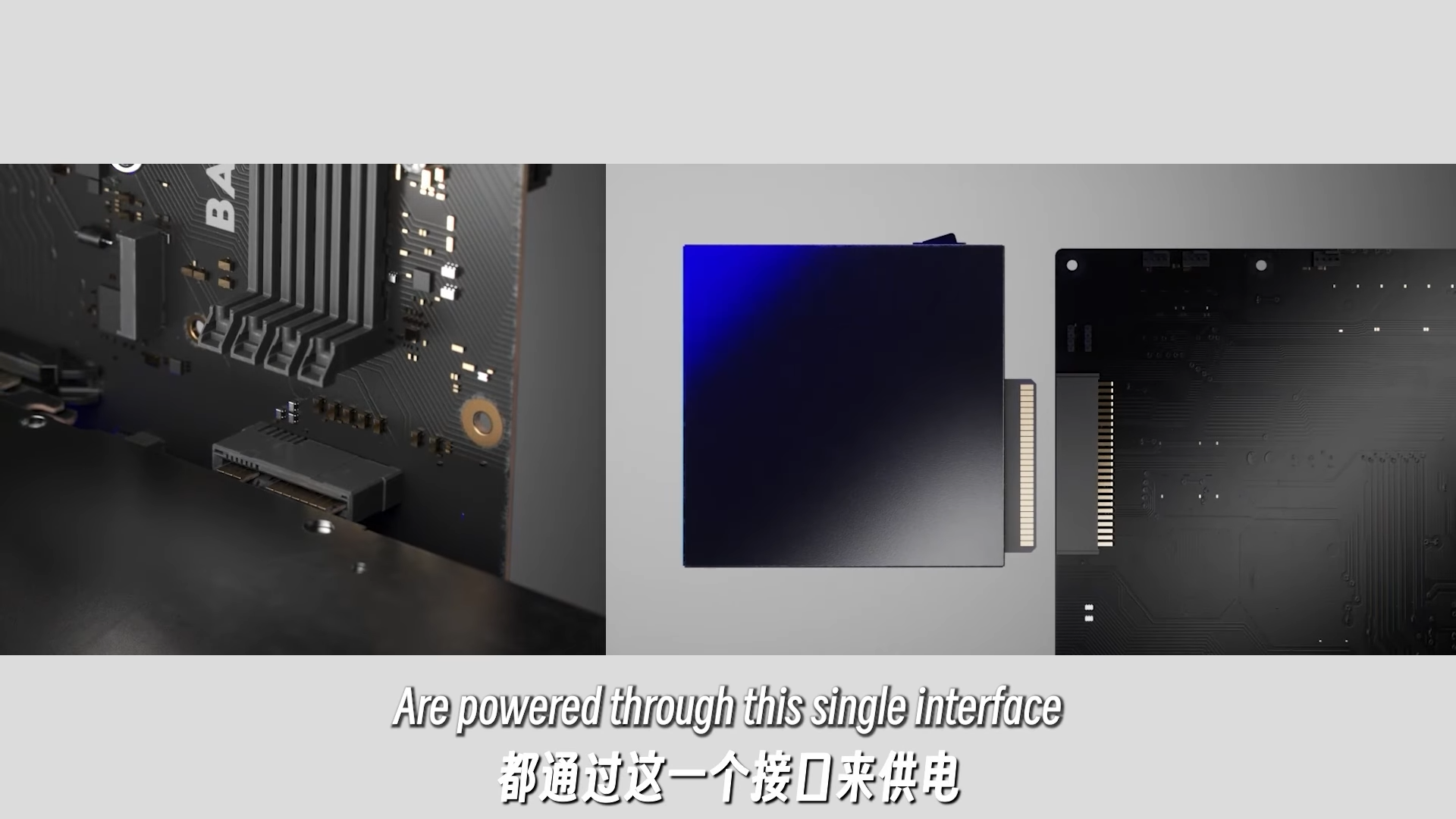
This 50-pin interface, referred to as the "gold-finger solution," is capable of handling up to 2,145W, which DIY-APE quickly points out isn't unrealistic since many server power supplies using the CRPS standard are rated for even higher wattages. Out of the total 2,145W, the CPU and GPU get 1,680W. Here, DIY-APE proposes a universal answer to GPUs in BTF 3.0 by merging the best of both worlds that exist right now.
See, current back-connect graphics cards either use DIY-APE's own method of hiding the PCIe cables with a removable top cover, or Asus' proprietary implementation of a GC-HPWR connector on the GPU itself. BTF 3.0 motherboards will come with DIY-APE's own version of this connector (able to provide 1000W of power), but for GPUs that don't support it, a right-angle adapter will be provided to bridge the PCIe plugs on the card with the connector on the board.
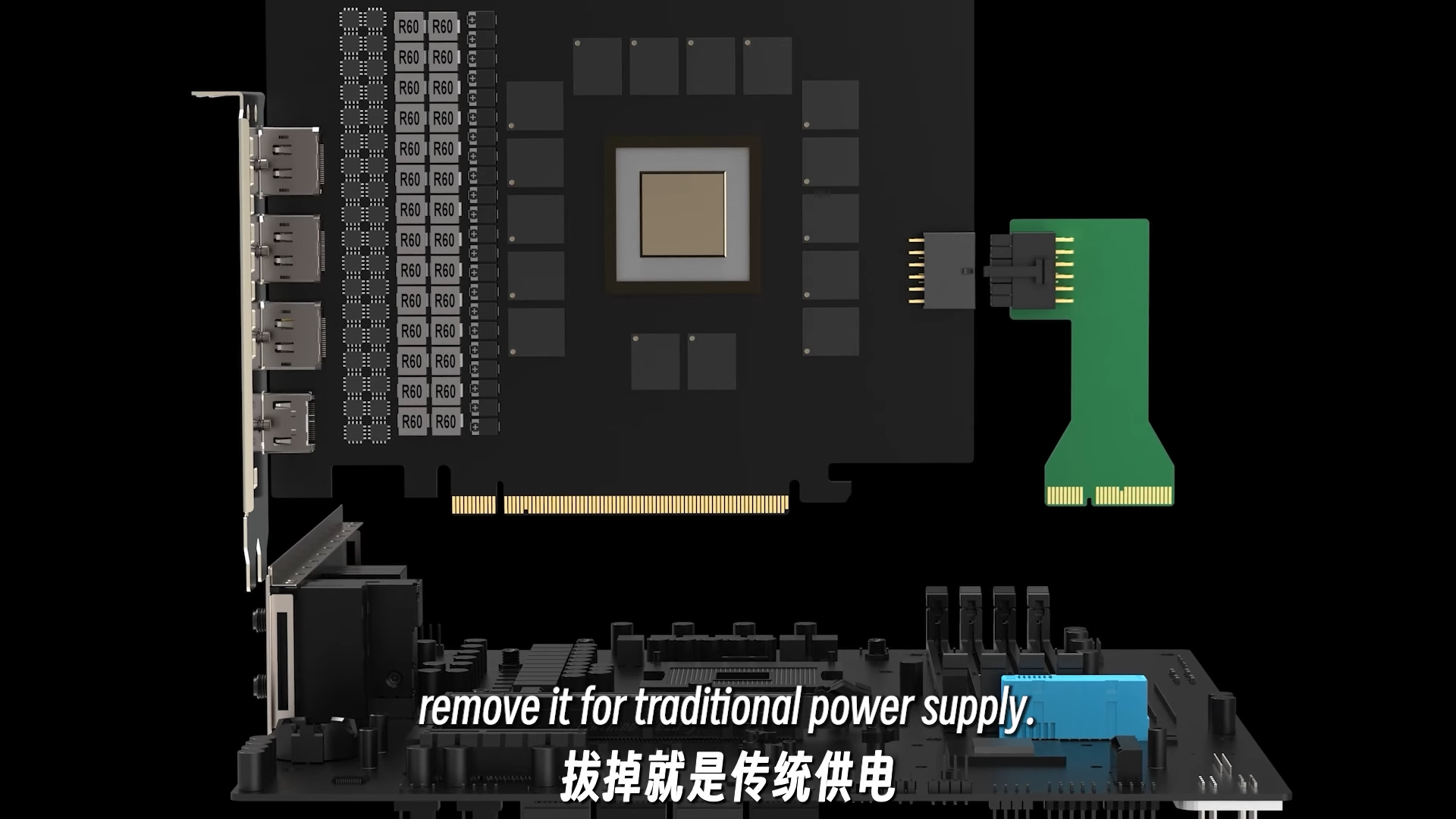
The new gold finger solution will connect directly to a power supply with a female connector, but it will also be compatible with standard ATX 3.0/3.1 models using an adapter to convert conventional plugs into a single 50-pin connector. Front panel headers will be merged into a more compact, simplified layout, but won't be integrated into the 50-pin connector to maintain wide compatibility with the majority of cases out there.

That nicely bridges into the rest of the BTF 3.0 standard, as it goes beyond just the connector. BTF 3.0 is an all-encompassing mandate for clean, effortless PC building. For instance, the standard includes short-tube water cooling in AIOs, and each case is supposed to come with fan/RGB hubs with pre-routed wires channeled toward fan slots, or even USB-C ports in designated areas for swift hotswapping.
Get Tom's Hardware's best news and in-depth reviews, straight to your inbox.


There are more specificities that DIY-APE highlights in the video, but the gist of it is that BTF 3.0 is not only a step forward — a significant one at that — but it's also a step in the right direction as it emphasizes backward compatibility, along with support for non-BTF parts with the use of adaptors. It's frankly a genius design if implemented right, but at the moment, it's just a concept.
DIY-APE actually built an entire PC with BTF 3.0 prototype hardware from Colorful and Sego, and it looks slick. It's flawless from the front, with only the most minute wiring visible at the rear, but even that's meticulously routed to appear deliberate. Some details, like how to handle fans in the BTF 3.0 spec, still need to be finalized, and DIY-APE clarifies it's up to the manufacturers' courage to go all-in on this future.

Follow Tom's Hardware on Google News, or add us as a preferred source, to get our latest news, analysis, & reviews in your feeds.

Hassam Nasir is a die-hard hardware enthusiast with years of experience as a tech editor and writer, focusing on detailed CPU comparisons and general hardware news. When he’s not working, you’ll find him bending tubes for his ever-evolving custom water-loop gaming rig or benchmarking the latest CPUs and GPUs just for fun.
-
Amdlova 12v, 5v and 3.3v need to die.Reply
They need to change to 36 or 48v
Less cables more power. -
chaz_music ReplyAmdlova said:12v, 5v and 3.3v need to die.
They need to change to 36 or 48v
Less cables more power.
Great comment. Absolutely. Higher voltage with lower current, and let the MB have local post regulators for other voltages. Although this has issues for high number of drives or SSD (like a NAS system).
Even though DIY-APE has good intentions for reducing wire clutter, he is propagating a flawed GPU power concept that the PSU industry has carried forward. With my background in power electronics, I outlined in a previous articles what the issues are:
1. The ever so bad idea on paralleling cables, especially across small connectors. This is a design goof that has been done over, and over, and over, and over ... Even the NEC has rules for how much you have to derate cables when you put them in parallel, and thye aren't going through connectors. If you parallel two wires, you derate to 80%. I believe it is derate to 70% for 3 wires in parallel, and 50% rating for 4. The tables can be confusing, because they assume you are using 3 phases.
2. There exist a serious ground loop issue within the PSU and the various power supply paths looping back through the motherboard. For instance, when the GPU 12V power is brought into the GPU through the high power connector, the intended return is back through the same high power connector. But the return can also go back through the PCIe connector to the motherboard, and finally return to the PSU through the ATX connector. This is why most of the burned GPU connectors only have the 12V feed pins burned: the return can find an alternate path through the PCIe connector. If they continue to raise the GPU power with this scheme, we will see more and more motherboards damaged.
Here are the sample pictures of just the 12V feed side burned. Notice on all of these the 12V wires are only damaged (by the 4 pin signal connectors):
https://cdn.mos.cms.futurecdn.net/uAVyHuRtHVs8iefTFsupNH-650-80.jpg.webp
https://cdn.mos.cms.futurecdn.net/QTebHt45YSd8Nq8oXu54q8-650-80.png.webp
@valthuer (I think this was yours) https://i.postimg.cc/R0ttdFgj/IMG-8616.jpg
https://cdn.mos.cms.futurecdn.net/ZdZ6MHbJv6MGnR3U9YyKLS-650-80.jpg.webp
https://cdn.mos.cms.futurecdn.net/4VQ6en2uzoE2Nxk47ungiM-650-80.jpg.webp
Here is the prior article where I pointed these out:
https://www.tomshardware.com/pc-components/gpus/amd-zapped-with-16-pin-power-connector-melting-issue-for-the-first-time-radeon-rx-9070-xt-paired-with-sub-par-psu-gets-singed